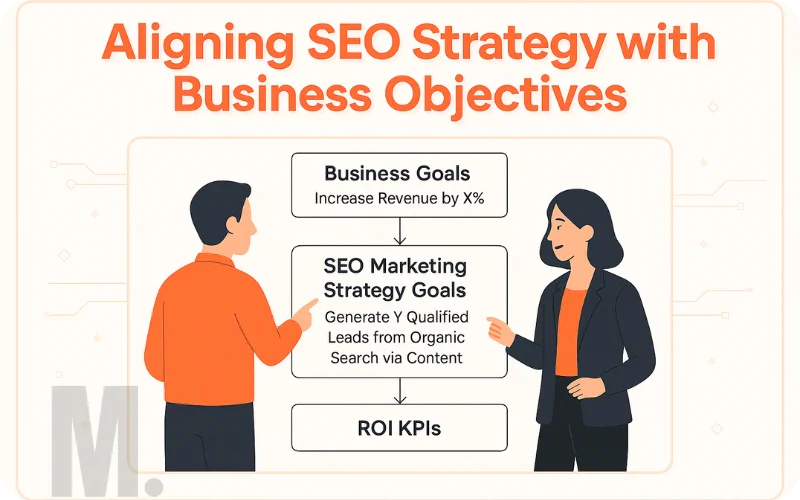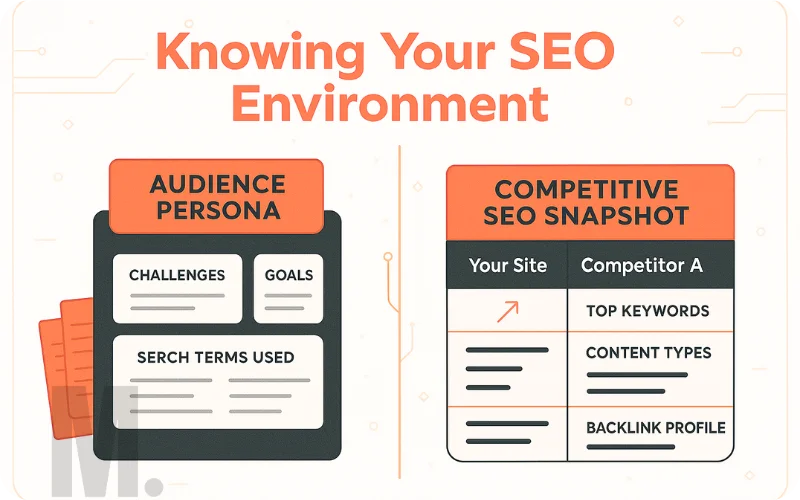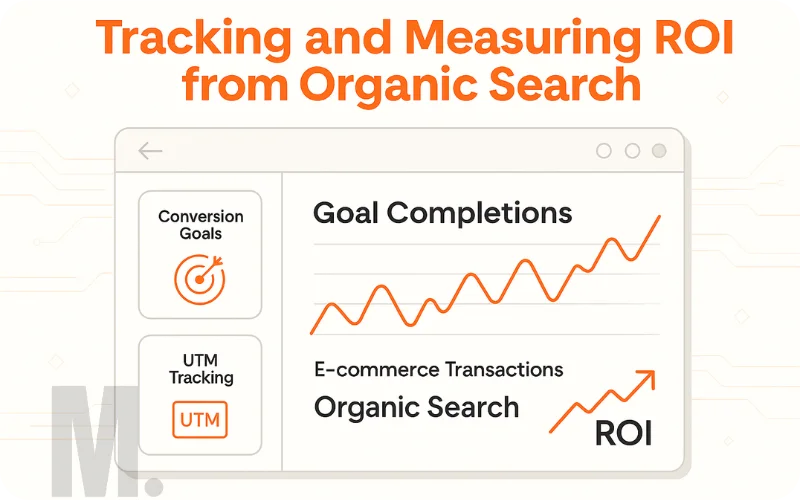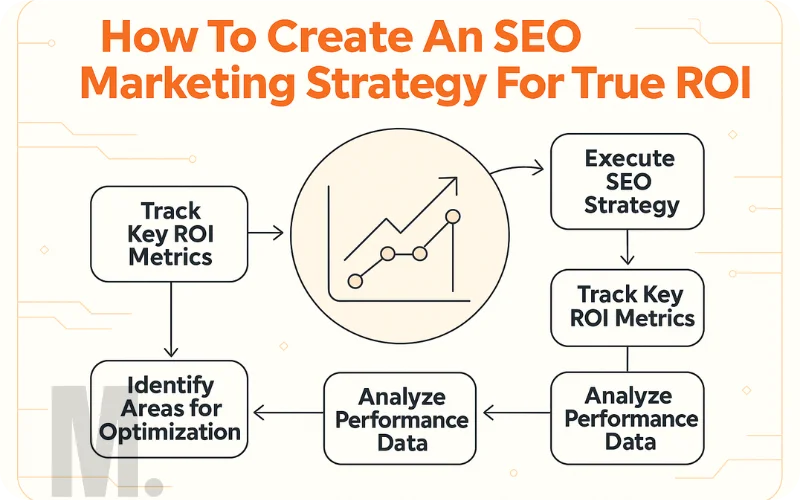Introduction:
So, you’re aiming to develop an SEO marketing strategy that does more than just boost rankings – one that delivers true, measurable Return on Investment (ROI)? Indeed, many marketers find that while they’re “doing SEO,” the connection to tangible business results can be elusive. The key often lies in building a cohesive and purposeful SEO marketing strategy from the ground up, with ROI as a central focus. Consequently, this guide will walk you step-by-step through how to create an SEO marketing strategy that is designed not just for visibility, but for genuine business impact. Therefore, let’s explore the essential components of crafting such a powerful plan.
Laying the Groundwork for Your ROI-Focused SEO Marketing Strategy
Define clear, business-aligned goals and KPIs
Before you can create an effective SEO marketing strategy, you must understand what “true ROI” means for your specific business. Therefore, start by defining S.M.A.R.T. (Specific, Measurable, Achievable, Relevant, Time-bound) goals that align directly with overarching business objectives. Are you aiming, for example, to increase sales from organic search by X%, generate Y qualified leads per month, or reduce customer acquisition cost through SEO? Establishing these precise goals and their corresponding Key Performance Indicators (KPIs) is the critical first step in building your SEO marketing strategy.

Conduct in-depth audience and competitor research
To create an SEO marketing strategy that resonates and converts, you need a deep understanding of your target audience. This involves, for instance, identifying their needs, pain points, search behaviors, and the language they use. Furthermore, analyze your competitors’ SEO efforts: what keywords are they targeting, what kind of content are they producing, and where are their strengths and weaknesses? This comprehensive research will inform every subsequent part of your SEO strategy, ensuring it’s both audience-centric and competitively aware.

Building the Core Components of Your SEO Marketing Strategy
Perform strategic keyword research focused on conversion intent
A cornerstone of any successful SEO marketing strategy is effective keyword research. However, for true ROI, it’s not just about finding high-volume keywords; it’s about identifying terms with strong conversion intent. This means, for example, prioritizing long-tail keywords, transactional queries (e.g., “buy [product] online,” “[service] quote [city]”), and informational keywords that address problems your product/service solves. Map these keywords to relevant stages of the buyer’s journey to guide your content creation within your SEO strategy.

Develop a high-value content plan optimized for users and SEO
Content is the vehicle that delivers your SEO marketing strategy. Therefore, plan to create high-quality, original content that:
- Addresses the keywords and user intent identified in your research.
- Provides genuine value, answers questions, and solves problems for your audience.
- It is optimized for search engines (using keywords naturally in titles, headers, body copy, and meta descriptions).
- Includes clear calls-to-action (CTAs) guiding users towards your desired conversion.
This involves, for instance, planning blog posts, articles, landing pages, and other formats that support your SEO strategy and ROI goals.

Implementing, Measuring, and Refining Your SEO Marketing Strategy for ROI
Implement robust tracking, analytics, and attribution
To measure the true ROI of your SEO marketing strategy, you must have accurate tracking in place. This means, for example, correctly setting up Google Analytics (or your chosen analytics platform) with clear conversion goals (e.g., form submissions, purchases, demo requests). Furthermore, use UTM parameters for campaign tracking where appropriate and explore attribution models to understand how different touchpoints, including your SEO-driven content, contribute to conversions.

Continuously analyze, report, and iterate to maximize ROI
Creating an SEO marketing strategy is not a one-time task; it’s an ongoing process. Therefore, regularly analyze your performance data. Which keywords are driving conversions? Which content pieces have the highest engagement and lead to sales? What is the cost per acquisition via SEO? Use these insights, for instance, to refine your keyword targeting, optimize underperforming content, improve your CTAs, and reallocate resources. Consistent iteration based on data is how you ensure your SEO strategy continues to deliver true ROI.

Tips:
- Primarily, ensure your technical SEO is solid (site speed, mobile-friendliness, crawlability) as it forms the foundation for your entire SEO marketing strategy.
- Also, integrate your SEO strategy with your other marketing efforts (e.g., social media, email marketing) for a cohesive customer experience.
- Furthermore, build high-quality backlinks from relevant and authoritative websites to boost your site’s credibility and search rankings.
- Additionally, focus on creating an excellent user experience (UX) on your website, as this positively impacts both users and SEO.
- Importantly, be patient; an SEO strategy focused on true ROI often yields significant results over the medium to long term.
- Consider investing in good SEO tools to help with keyword research, site audits, rank tracking, and competitive analysis.
Warnings:
- Crucially, avoid “black hat” SEO tactics (like keyword stuffing or buying links) as they can lead to penalties and damage your SEO marketing strategy’s long-term effectiveness.
- Also, don’t get fixated solely on ranking for a few high-volume keywords if they don’t convert; prioritize keywords that drive valuable actions.
- Furthermore, remember that search engine algorithms are constantly evolving, so your SEO strategy will need to adapt over time.
- Finally, don’t underestimate the resources (time, expertise, budget for tools/content) required to implement and manage a comprehensive SEO strategy effectively.
Things You’ll Need (To Create an ROI-Driven SEO Marketing Strategy):
- Clear business goals and a deep understanding of your target audience, of course.
- Additionally, access to website analytics (e.g., Google Analytics, Google Search Console).
- SEO research and analysis tools (e.g., SEMrush, Ahrefs, Moz, or free alternatives).
- A plan for creating high-quality, optimized content.
- Accurate conversion tracking mechanisms.
- Lastly, a commitment to ongoing monitoring, analysis, and iteration.


